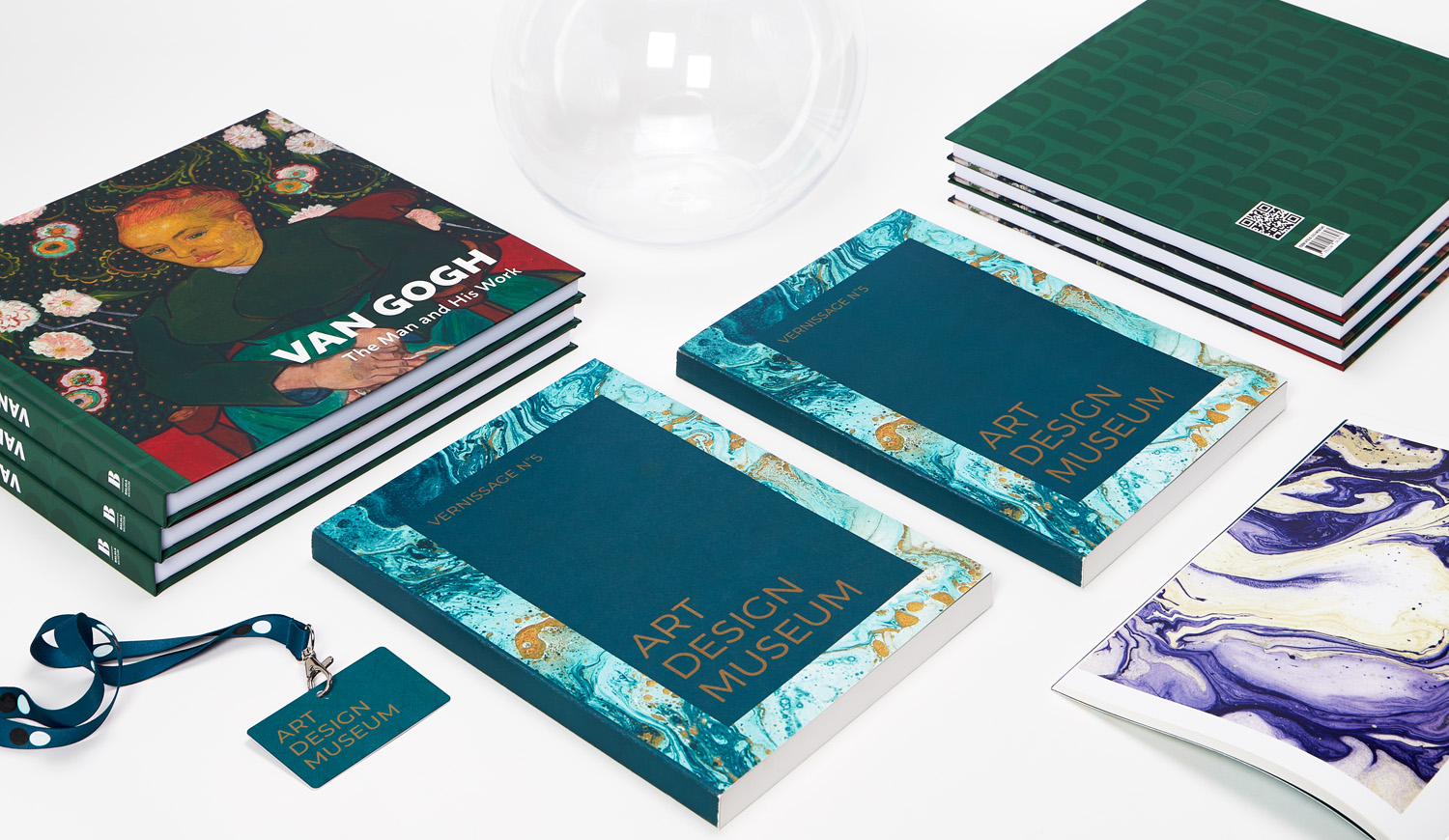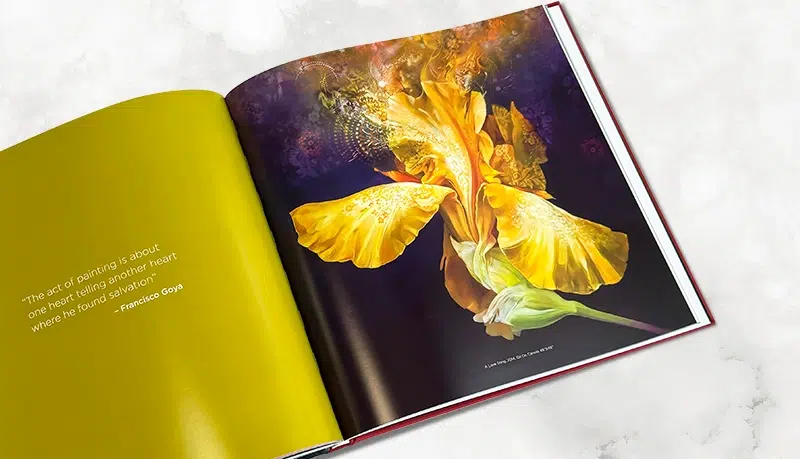Insider Techniques to Improve Your art book Print Quality
Discover the Important Overview to Art Book Printing for Aspiring Artists and Publishers
As an aspiring musician or author, comprehending the subtleties of art book printing is necessary to bringing your vision to life. You'll require to consider different factors, from selecting the right type of book to ensuring color precision and selecting suitable materials. Each choice influences the end product considerably. What are the key aspects you should concentrate on to develop a stunning art book that really represents your job?
Comprehending Various Sorts Of Art Books
When you dive right into the globe of art publications, you'll promptly discover that they come in various forms, each tailored to different artistic expressions and audiences. Coffee table books often showcase spectacular visuals, ideal for laid-back surfing, while essays dive deep into a private artist's work, offering context and insights. If you're interested in particular art movements, exhibition catalogs provide comprehensive documentation of shows, featuring essays and critiques.
For educational functions, art guidebooks and method books assist you through numerous mediums and designs, making them vital for aiming artists. Each layout serves its objective, and understanding their differences can enhance your art book trip.
Picking the Right Paper and Materials
Picking the right paper and materials can considerably impact the general top quality and feeling of your art book. For vibrant colors and complex information, opt for a glossy surface or a heavyweight matte paper that improves aesthetic deepness.
Think of the weight of the paper, as well. Thicker choices often lend a more expert look, while lighter documents can lower printing costs. Don't ignore the binding products; a strong cover can shield your web pages and include in guide's visual.
Ultimately, take into consideration sustainability. Eco-friendly options are gaining appeal and can mirror your worths as an artist. By thoroughly selecting your paper and materials, you'll assure that your art book not just looks excellent however likewise feels special in the hands of your viewers.

Picking the most effective Printing Techniques
When it involves printing your art book, picking in between balanced out and digital printing can substantially affect your last product. You'll additionally wish to take into account exactly how paper quality influences the overall feel and look of your art work. Let's discover these essential printing strategies to discover the most effective fit for your task.
Offset vs. Digital Printing
While both offset and digital printing have their advantages, selecting the ideal strategy for your art book can greatly affect the last item. Countered printing offers premium pictures and vivid shades, making it perfect for larger print runs. Eventually, your option needs to align with your artistic vision and distribution technique, making sure that your art book mirrors the top quality you desire.
Paper Top Quality Factors To Consider
Choosing the right paper top quality can considerably improve the aesthetic appeal and responsive experience of your art book. For prints, a shiny surface can make images pop, while a matte coating provides a softer, a lot more subtle appearance.
Following, think regarding the sustainability of your option. Environment-friendly alternatives are ending up being increasingly popular and can appeal to environmentally-conscious readers. Ultimately, request samples to see just how different documents collaborate with your artwork, making sure the last product shows your vision perfectly.
Making Certain Shade Accuracy in Your Prints
To achieve sensational prints, you need to concentrate on color accuracy from the start. You'll wish to utilize color calibration methods to confirm your monitor and printer remain in sync. Additionally, proofing your work before the final print run can aid catch any kind of discrepancies, ensuring your art looks equally as you pictured.
Color Calibration Techniques
Assuring color accuracy in your prints starts with efficient color calibration strategies that help preserve uniformity between your digital pictures and last printed items. Calibrate your screen making use of equipment calibration tools to attain the best shade representation. This confirms that what you see on-screen matches what obtains published. Next off, select a color account fit for your printing process, like CMYK for print materials. Consistently check your printer's settings and maintain it to avoid shade shifts. It's additionally necessary to use premium paper that complements your inks, as different surface areas can useful site substantially influence shade result. By regularly applying these techniques, you'll enhance the total quality of your art prints and much better convey your artistic vision.
Proofing for Accuracy
While you could believe your digital images await print, proofing is important for attaining color precision. Before devoting to a full print run, always request an evidence from your printer. This enables you to see how shades translate from screen to paper. Compare the evidence with your adjusted screen to identify any kind of inconsistencies. Pay attention to saturation, illumination, and color, as these elements can considerably impact your end product.
If changes are needed, connect clearly with your printer regarding your desired results. Don't think twice to request several evidence if required; it's worth the financial investment to get it. Eventually, thorough proofing warranties that your art work is stood for as you imagined it, preserving your artistic stability throughout the printing procedure.

Designing Layouts That Enhance Your Artwork
When you make formats for your art book, it's vital to consider exactly how each aspect engages with your art work. Go for an equilibrium in between visuals and message, making certain neither outweighes the various other. Usage white room purposefully; it offers your art work space to take a breath and accentuates its details.
Consider the flow of your book. Organize images in a manner that guides the viewers's eye, developing a story or thematic development. art book. Differ the sizes and orientations of your artwork to keep the layout dynamic and interesting
Select fonts that complement your art work without sidetracking from it. Maintain text concise and pertinent, giving context or understanding that improves the viewer's experience.
Ultimately, examination different layouts. Publish examples to see how the designs translate theoretically, and change as needed. By attentively creating your designs, you'll create an aesthetically appealing art book that resonates with your target market.
Binding Choices for a Professional End Up
Selecting the right binding alternative can substantially affect the overall discussion of your art book. You'll wish to take into consideration both appearances and longevity when making your option. Popular options consist of ideal binding, which provides a sleek appearance and is perfect for thicker publications; saddle stitching, perfect for smaller brochures; and spiral binding, which enables pages to lay level for easy viewing.
If you're intending for a premium feeling, case binding is a superb choice, giving a durable cover and a specialist look (art book). Do not neglect regarding the cover product; options like fabric, natural leather, or a glossy coating can raise your book's allure
Whatever option you select, see to it it matches your art work and enhances the visitor's experience. Take your time to consider the benefits and drawbacks of each technique, so your last product shows the top quality of your creative vision.
Preparing Your Apply For Publish Readiness
To assure your art book is print-ready, you'll need to pay attention to submit prep work. Beginning by setting your paper dimension to match your wanted print dimensions. Use high-resolution pictures-- 300 DPI is the criterion-- to ascertain sharp, dynamic visuals. Transform your files to CMYK setting, as this color space is finest for printing. Do not neglect to consist of bleed areas, typically an additional 0.125 inches around your web pages, to stop any white edges after trimming.
Likewise, install your font styles or transform message to details to prevent any type of font style problems. Save your work in a PDF style, as this is the most accepted file type for printers. Double-check your files for any typos or format mistakes, as adjustments can be pricey after the reality. Lastly, think about producing a proof to evaluate before the final print run. Adhering to these steps will help you attain a refined, expert art book.
Regularly Asked Concerns
What Is the Average Cost of Publishing an Art Book?
The average cost of publishing additional reading an art book varies, but you can anticipate to pay anywhere from $5 to $20 per copy, depending on variables like size, paper top quality, and printing quantity.
How Can I Locate a Reliable Printing Business?
To find a reputable printing company, begin by researching on-line evaluations and asking other musicians for recommendations. Contrast quotes, inspect profiles, and interact your needs clearly to guarantee they understand find out here your vision and top quality expectations.
What Is the Regular Turnaround Time for Printing?
The regular turnaround time for printing differs but normally ranges from one to four weeks. Variables like project intricacy and volume can impact this. Constantly confirm with your selected printer for specific timelines and expectations.
Can I Publish My Art Book in Limited Quantities?
Yes, you can definitely print your art book in minimal quantities. Numerous printing firms offer short-run choices, permitting you to generate just the number you need, making it less complicated to manage expenses and supply.
What Legal Considerations Should I Know for My Art Book?
You must take into consideration copyright, licensing agreements, and design launches when developing your art book. Make certain you can make use of all photos and text, safeguarding yourself from prospective lawful concerns in the future.